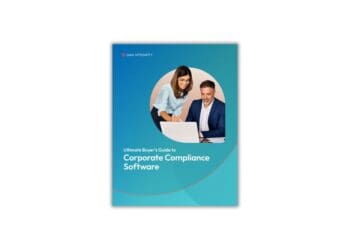A successful onboarding process is one that brings your new hires into the organization seamlessly and prepares them to make a positive impact on the company. But onboarding is more than just getting your new hires acclimated to their new roles and the organization; it is actually the start of your company’s interactions with its employees in regard to the state law compliance obligations all employers face. All of the forms and processes associated with employee onboarding, if completed incorrectly, can put the company at risk both at the time of hire and through the employee’s time with the company. One of the more challenging aspects of the onboarding process involves complying with all of the state-specific new hire notification requirements, which are difficult to track and often ambiguous, yet must be implemented correctly to protect your organization.
Legislation around new hire notifications is quickly evolving, especially in areas around wage notifications, paid sick leave and pregnancy accommodation. Each state has different standards and requirements, and there is no central location for all of the state-required new hire notifications across the United States; as a result, it can be difficult for organizations to keep up, especially for employers with teams in multiple states. Much of the legislation is also complex and ambiguous, which can leave employers struggling to understand exactly what they should do to maintain compliance. Further complicating the issue, many states do not provide a template for the notification, just the regulations, so companies must interpret the legislation and create their own forms. Even if they do have government-provided templates, the forms can still be confusing and require many pieces of data, potentially exposing the organization to risk if each individual hiring manger is tasked with filling out the forms as they see best.
Overall, it can be very difficult to manage the many nuances of state legislation around new hire notification requirements, especially for multi-jurisdictional employers. To protect their organizations from fines and future litigation, employers must find a way to track, develop and consistently enforce these required notifications and provide proof of their actions in the form of the documents and an audit trail if needed.
Why You Need to Get it Right
Employers today are more vulnerable than ever because — along with an increase in laws and regulations regarding employee notification requirements — governments have redoubled enforcement efforts, and plaintiffs’ attorneys are shrewdly searching for potential violations to exploit. Risks can include costly fines and penalties, tied directly to noncompliance with the notification. For instance, employers that do not give notice of the New York Wage Theft Prevention Act may have to pay damages of up to $50 per day, per employee (a maximum of $5,000 per employee in civil lawsuits filed by workers). But a larger concern is future employee litigation where failure to comply with the new hire notification can add to the employee’s case against his or her employer. This is an especially serious concern with respect to wage and hour notifications, as such notifications are the beginning piece of employer compliance with state wage and hour laws.
Recent research shows that wage and hour settlements have cost employers more than $3.6 billion between 2007 and 2015.[1] Failure to provide the state-required wage notification with proper data during the new hire process can be very significant as a building block of potential liability. Failure to provide the required notifications often leads to increased administrative scrutiny by either state or federal agencies.[2] This increased scrutiny can make employers especially vulnerable to wage and hour noncompliance litigation in areas such as classification of employees as exempt vs. non-exempt, off-the-clock work and other wage issues. This risk is widespread, applying to companies of all sizes and industries.
Although wage and hour laws tend to get most of the attention, there are several new regulations in other areas that pose litigation and fine risks as well. For example, Rhode Island recently passed pregnancy accommodation legislation requiring employers to extend specific rights to employees who have a condition related to pregnancy or childbirth. As part of compliance with that new law, new hires must be notified of their expanded rights. Paid/earned sick leave represents another growing trend, with Oregon and Massachusetts as example states that have implemented new sick leave laws that include notification requirements, and other states introducing legislation to pass similar requirements.
Best Practices for State Notification Compliance
As new regulations around new hire notifications continue to emerge, organizations must be prepared to address them appropriately and in whichever states they hire. So what are the best ways to minimize risk, reduce costs and deliver all required notifications to new hires? Consider the following best practices:
- Conduct a thorough review of the existing new hire requirements in each state where you do business. As state legislators continue to increase obligations for onboarding and notifications, make sure you are aware of the policies of any state in which you operate and in any state to which your organization may expand in the future. This often requires enlisting internal or external legal counsel. Additionally, electronic onboarding providers may provide legislative research along with the electronic state notifications.
- Constantly monitor new legislation and update onboarding paperwork. Change is a constant when it comes to state-required notifications, and keeping up to date is essential. Subscribing to compliance updates from law firms can be a great help in staying on top of new legislation. Additionally, look to onboarding providers who automate this service and will also provide legislative updates on new hire requirements as part of the offering.
- Establish a process for implementing new requirements. New requirements often need to be implemented quickly. Establish your process now for implementing change in a timely fashion. An automated electronic system is ideal, as it enables your company to make a change at the corporate level and cascade it out to all locations. Your electronic system should also allow for proper version control, and role-based approvers and publishers to enable you to follow your legal counsel’s advice for changing new hire documentation. Have a plan in place with multiple levels of support to ensure coverage in case a process owner is unavailable when a new notification must be published.
- Don’t be overly generic in your notification documents. Wage notifications, leave of absence laws, vacation policies and other obligations vary dramatically under state law. There is no one-size-fits-all approach, and taking a broad strategy can lead to risk. If a state publishes a notification template, the state often looks for that exact template to be in use during an audit.
- Self-audit and create detailed trails. Through regular and consistent self-audits of your current processes, you can help uncover potential problem areas before they become larger issues. Maintain a strong audit trail tied to employee notifications, including timing, people involved in the delivery and receipt and the employee’s signature on the actual document delivered. Work with your legal team on the best way to conduct self-audits to protect your organization from your discoveries.
- Centralized document retention. Given the sensitive information collected during the onboarding process, such data must be maintained securely. An electronic-based repository can help protect documentation with role-based access so that only relevant stakeholders can access it. Another crucial reason for centralized document retention is to make it easier to produce the documents signed by the employee in case of an audit or litigation. Often these documents can be misplaced, especially in organizations with multiple locations, and if you cannot produce the document, you cannot prove it was delivered to the employee.
Implementing a New Hire Process that Includes State Notifications
As the state new hire regulations continue to evolve and changes are introduced rapidly, employers must be able to adapt their processes accordingly. At the same time, as employers expand to other states to enter new markets or tap into additional talent pools, the need to account for the various and constantly changing state-specific regulations is pressing. Employers must understand the risk both from penalties associated with the failure to provide required state new hire notifications and the additional liabilities these compliance risks could pose. By understanding the challenges inherent in onboarding compliance and adopting the best practices to comply with state-specific requirements, your organization can minimize risk and help to ensure a successful approach.
[1] Plancich, S., Fanaroff, N., and McIntosh, J. (2015, July 14). Trends in Wage and Hour Settlements: 2015 Update. NERA Economic Consulting. Retrieved from http://www.nera.com/publications/archive/2015/trends-in-wage-and-hour-settlements-2015-update.html.
[2] Bailey, J. and Richter, C. (2016, Jan. 25). Be an Onboarding Rockstar…and Steer Clear of Legal Issues [Webinar]. In Equifax Workforce Solutions webinar series. Retrieved from http://workforce.equifax.com/webinar-onboarding.















